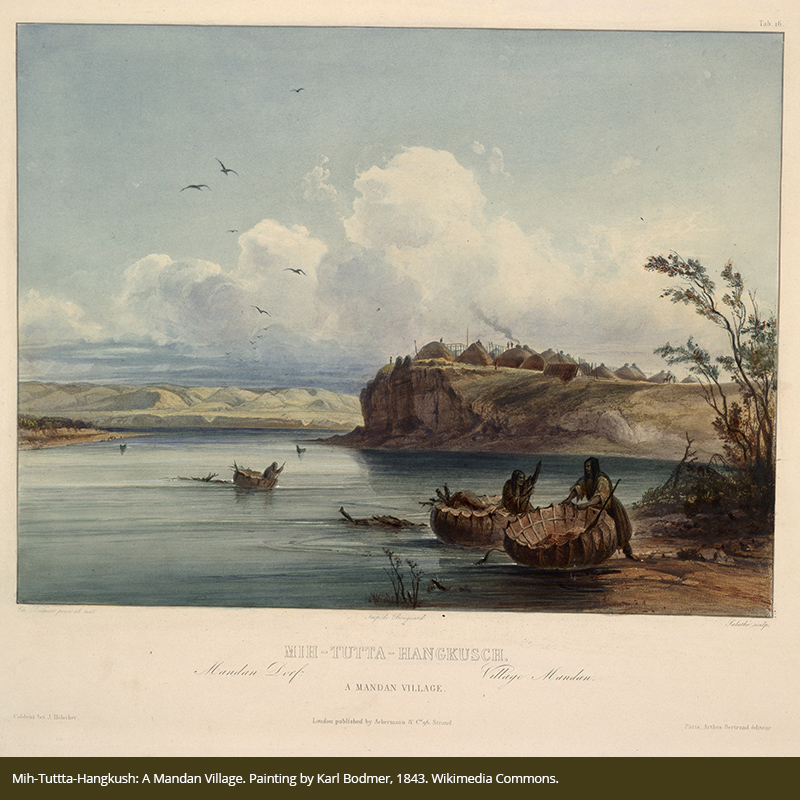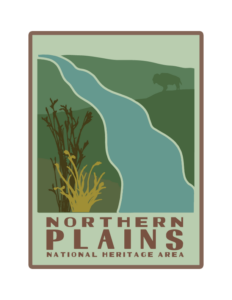Indigenous Peoples
The Mandan were a famously hospitable people. They assimilated members of neighboring tribes and welcomed strangers to their villages. This quality made them superior traders and often served to protect them from the aggression of others on the populating continent.
The Mandan and Hidatsa constructed sod-covered structures on a rectangular frame of cottonwood logs and woven willow branches. These agricultural pioneers developed several varieties of quick-ripening crops specifically suited to the short growing season of the Upper Missouri—ultimately, 13 variants of corn, 9 variants of beans, 5 variants of squash as well as tobacco and a domesticated sunflower.
In addition to developing regional domesticates, it is thought that more intensive farming techniques may also have been used, such as raised fields or active irrigation. This agrarian diet was supplemented with bison, which was also regarded as sacred to the indigenous way of life. The river provided fish, shellfish, drinking water, and in its annual floods, fertile soil to replenish the gardens.
The purposeful agricultural practices of the Mandan and Hidatsa produced a unique phenomenon—a food surplus. The stores, essentially corn and squash, were kept in cache pits around and under their lodges. Agricultural surpluses allowed the people to remain stationary year-round and the population to grow. Surpluses also provided a ready product for trade, and other tribes could depend on a consistent location to find the earth lodge people year after year. In this way, the Heart River region became the trade center of North America.
Sites relating to the Indigenous Peoples of North Dakota
- Menoken Indian Village State Historic Site
- Double Ditch Indian Village State Historic Site
- Lewis & Clark Interpretive Center
- Fort Mandan State Park
- Pulver Mounds State Historic Site
- Knife River Indian Villages National Historic Site
- Crowley Flint Quarry State Historic Site
- Molander Indian Village State Historic Site
- Huff Indian Village State Historic Site
- Chief Looking’s Village
- On-A-Slant Indian Village at Fort Abraham Lincoln State Park
- North Dakota Heritage Center & State Museum, “Innovation Gallery”
- Mandan Hidatsa Arikara Nation




